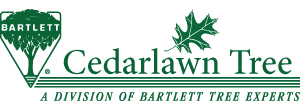Caring for Aging Trees Part IV – Insect Pests
Tree insect pests are capable of impacting the health and longevity of mature trees. This may be accomplished by reducing photosynthetic capacity, draining carbohydrate reserves, reducing water and photosynthate movement within trees, opening up wounds for disease pathogen invasion and/or direct inoculation of trees with pathogens, to mention a few. Whether a particular insect will have a negative effect on tree health will depend on the offending insect(s).
The most damaging insect pests to mature trees are those that either are capable of consuming a majority of the foliage or attack healthy woody tissue of trunks or branches. Foliage-consuming caterpillars, such as winter moth and gypsy moth, can amass in trees in large numbers and devour the foliage of entire canopies. The timing of when this happens impacts tree health. Winter moth is active from bud swell until around the last week of May here in the Northeast US. Gypsy moth actively feeds for several months (until around the first week of July in the Northeast). Both insects can reduce the photosynthetic capacity of a tree by consuming the foliage. It should be noted that a partial early defoliation will not necessarily have a negative effect on tree health. Trees that are still actively producing foliage can adapt to internal resources/external stimuli to produce a complement of larger-than-normal leaves to adapt to the stress of leaf loss and improve photosynthetic efficiency.
Trees defoliated by winter moth that are in reasonable health will put out another flush of leaf growth to replace the missing foliage. This will cause a second depletion of a tree’s carbohydrate reserves (the first coming during budbreak as energy is needed to produce a flush of foliage). It is these carbohydrate reserves that are drawn upon to provide the energy needed for tree internal functions, growth and defense. The second flush of foliage will provide photosynthetic output that will go back to replenishing and contributing to those carbohydrate reserves.
Trees defoliated by insects that eat a large portion of leaf tissue later (gypsy moth) often have difficulty putting out a second flush of leaf tissue. Environmental cues such as day length prohibit additional budbreak beyond a certain point of the year. Trees now will have a reduced photosynthetic capacity to replenish carbohydrate reserves. It has been well documented that oak trees that have been defoliated several years in a row are in serious risk of decline.While insects that consume large amounts of foliage can weaken a tree, insects that attack woody tissues often cause a much more rapid decline and death of trees. Bark beetles and wood boring insects fall into this category. Bark beetles are often attracted to trees in decline. Trees that are in a weakened condition often succumb to a mass attack of bark beetles (black turpentine beetle on pines). Some of these bark beetles carry fungi into the tree with them. Ambrosia beetles carry a fungus that feed the larvae of the insect and also contributes to reducing the water, nutrient and photosynthate conductive capacity of a tree through fungal colonization.
Many wood-boring insects (bronze birch borer or two-lined chestnut borer) are often also attracted to stressed trees. Disruption of conductive tissue results from tunneling underneath the bark and often results in death of trees. Elm bark beetles carry a fungus that is introduced into elm trees and results in the spread of the fungus throughout the tree via water conducting tissue. The tree reacts to this invasion by plugging the water-conducting tissues that result in the death of the tree. Scale insects that attack woody tissue (white prunicola scale on cherries for example) can also cause decline or death of trees.It is important to remember that only a small number of insects are actually harmful to trees. Some insects found on trees may only cause aesthetic injury to trees or may not even be a pest. Some may actually be predaceous to insects feeding on trees. Also, it is not uncommon to find insect activity that is not threatening to the health of a tree in dead or decaying wood. The role of a certified arborist is to alert you to the threats that warrant concern and remediation. For some of these insects viable treatment options exist. For others, prevention is the best cure.






